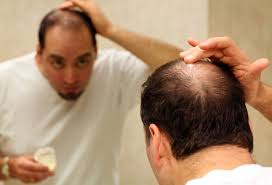Before you undergo an esthetic crown lengthening, there are several things you should do to prepare. These include an exam, preoperative care, and recovery time. After the procedure, proper oral hygiene is important. It would be best to brush your teeth every time you eat or have a snack and always be gentle when cleaning the surgical site. A good antiseptic mouthwash will help you in this process.
Exam
Exam preparation for successful esthetic crown lengthening Plainview, NY surgery begins with careful planning. Your dentist should evaluate all factors that could affect the procedure’s outcome. They can also collaborate with the surgeon to determine how much tooth structure needs to be exposed during surgery. The ultimate goal is to create a dentition that functions properly and provides a physiologically sound occlusion.
As with any restorative procedure, the success of crown lengthening depends on the appropriate diagnosis and planning. While the treatment for crown lengthening is generally designed to improve the appearance of a smile, it may also be used to repair teeth that have suffered extensive damage below the gum line. The surgical process, however, varies depending on the procedure.
The procedure will result in a longer, more attractive smile. In some cases, the procedure will involve trimming excess gum tissue and exposing the existing teeth to prepare the mouth for restoration. While the process can be painful, most patients are satisfied with the results and are now enjoying a new, more attractive smile.
Preoperative care
Before undergoing the crown lengthening procedure, following the proper preoperative care instructions is crucial. To ensure successful outcomes, the procedure should be preplanned and based on a complete assessment of the patient’s dental history and periodontal condition. Surgical crown lengthening can be used for therapeutic procedures and to improve esthetic aspects. Depending on the underlying etiology, different techniques may be necessary. Regardless of the type of procedure, a team-based approach and a high level of experience are essential to a successful outcome.
In addition to preoperative care, patients must be free of underlying conditions. For instance, a patient with chronic gingival soreness should consult a dentist who can evaluate the extent of gingival tissue that must be exposed during the procedure. The ultimate goal of the procedure is to create a functional and physiologically sound dentition.
The surgical procedure is a fairly straightforward outpatient, often lasting only one hour. Before the procedure, x-rays will be taken, and the surgeon will discuss the patient’s medical history. Then, they will assess the condition of the gums, teeth, and bone structure to determine how much gum will be removed.
Recovery time
The total recovery time for successful esthetic crown lengthening is usually two to three months. This depends on the specific steps that are taken. Patients should plan to take at least two days off of work after the procedure. They are also advised to avoid drinking very hot or cold beverages and flossing near the surgical site. Moderate bleeding of the gums is normal after the procedure, but patients should consult with their periodontist immediately if they experience profuse bleeding.
The procedure is not painful, and most patients experience no discomfort during dental sedation. However, patients should expect to experience some pain during the recovery period. The dentist may recommend an over-the-counter pain reliever to help manage discomfort during this time. In addition, patients should avoid eating hot or greasy food for the first 24 hours after the procedure. It is also important to avoid vigorous mouth rinsing.
The recovery time for successful esthetic crown lengthening depends on the type of surgery. It may involve a gingivectomy or removing gum tissue. A surgeon may use a laser, scalpel, or electrocautery to remove the tissue. After the procedure, patients should return to the Denver office to have the stitches removed and to check their healing. Most patients choose crown lengthening for cosmetic reasons. This procedure is the ideal solution for a “gummy” smile.
The crown length depends on the attached gingiva’s width and the crestal bone‘s position. To avoid gingival inflammation, it is recommended to have at least two to three millimeters of attached gingiva before the procedure. The restoring dentist then makes an alginate impression and wax-up of the anterior maxillary teeth to assess the length of the incisogingival bone, the mesiodistal width, and the contour of the teeth. These impressions guide the amount of ostectomy or gingival recontouring necessary to achieve the desired result.
 eTopical Precious Finds
eTopical Precious Finds


